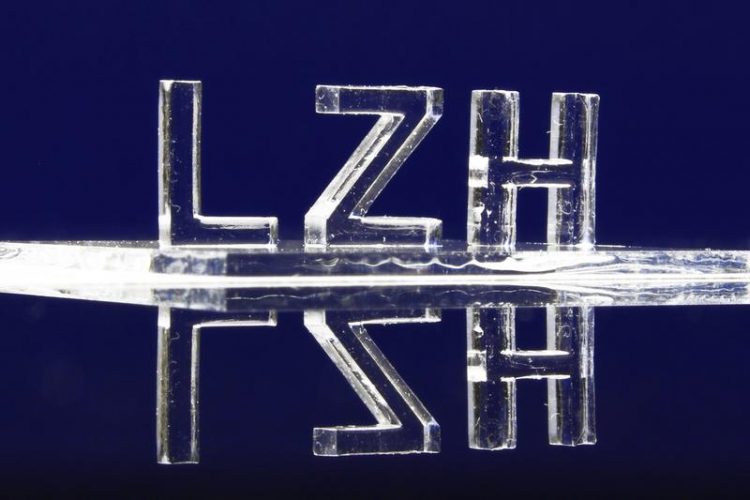LZH at the LASER World of Photonics 2017: Light for Innovation

At the LASER 2017, the LZH will be presenting additive manufacturing from the macro- to the nanoscale (here: stereolithography). Photo: LZH
The focus is on optical components and systems, optical produc-tion technologies as well as on industrial and biomedical optics. Among other things, the LZH will be presenting optics for special applications, compact lasers and the latest developments in the field of laser material processing and quality control. Seven monuments from Hannover will vividly illustrate the LZH’s spectrum of activities. From laser material processing of metals and plastics to additive manufacturing and up to optical coatings, Hannover demonstrates its innovation potential.
Optical components and systems
In the field of optical components, the LZH provides customer-specific solutions even for difficult and unusual problems. At the exhibition, among other things, the research institute will show telescope lenses for space applications and miniaturized complex filters. Be it the characterization of optics, coating services or optics coating for research and other purposes, the LZH is the right partner not only at the LASER 2017.
For the first time, this year, the LZH will be presenting a compact laser head for LIDAR1, LIBS2 and material processing that emits high pulse energies at large repetition rates. The passively Q-switched solid-state laser works with a wavelength of 1030 nm and 515 nm. Also for the first time, the LZH shows a fully glass-based cladding light stripper that extracts leakage radiation from optical fibers in a well-targeted way, and pump combiners that deliver pump radiation to fiber lasers monolithically.
Optical production technologies
From wire-based deposition welding with deposition rates of more than 10 kg/h to Selective Laser (Micro-)Melting, stereo-lithography and nozzle-based processes up to Two-Photon-Polymerization – the LZH will be presenting the state-of-the-art in additive manufacturing: from the macro- to the nanoscale.
Another topic in the field of optical production technologies is the use of lasers underwater. At the stand of the LZH, processes for cutting sheet metal and for analyzing material on the seabed will be shown. In the field of lightweight construction, the institute presents adapters made of steel-aluminum for the light-weight ship building of tomorrow. Further exhibits cover an automated glass welding process with filler material as well as a laser-encoded shaft for torque measurement.
Industrial and biomedical optics
In the field of industrial and biomedical optics, this year’s focus is on quality-control with light-based methods. At the exhibition, among other things, the LZH will be demonstrating how the Opti-cal Coherence Tomography can be used for inline quality control during laser transmission welding. The three-dimensional imaging of 3D-printed parts made of plastics using laser grid tomography is suitable for controlling manufacturing results, too.
1 LIDAR (eng.: Light detection and ranging) is an optical method for distance measurement, similar to the radar.
2 LIBS (eng.: Laser Induced Breakdown Spectroscopy) is a method to analyze the composition of a material.
Media Contact
More Information:
http://www.lzh.de/All latest news from the category: Trade Fair News
Newest articles

Largest magnetic anisotropy of a molecule measured at BESSY II
At the Berlin synchrotron radiation source BESSY II, the largest magnetic anisotropy of a single molecule ever measured experimentally has been determined. The larger this anisotropy is, the better a…

Breaking boundaries: Researchers isolate quantum coherence in classical light systems
LSU quantum researchers uncover hidden quantum behaviors within classical light, which could make quantum technologies robust. Understanding the boundary between classical and quantum physics has long been a central question…

MRI-first strategy for prostate cancer detection proves to be safe
Active monitoring is a sufficiently safe option when prostate MRI findings are negative. There are several strategies for the early detection of prostate cancer. The first step is often a…



